Get Straight Teeth with SureSmile® Clear Aligners
If you’re looking to straighten your teeth without the look or hassle of traditional braces, SureSmile® clear aligners could be your ideal solution. This advanced orthodontic treatment helps adults and teens achieve straighter teeth discreetly and comfortably — no wires or brackets required.
Benefits of SureSmile Clear Braces
- Speed: Get straighter teeth in as little as 6–12 months — significantly faster than traditional braces, which average 18–24 months.
- Appearance: SureSmile trays are nearly invisible, so you can straighten your teeth without anyone noticing.
- Hygiene: The aligners are removable, which allows you to brush and floss normally and keep your teeth and gums healthy.
- Convenience: Enjoy your favorite foods without restriction. Simply remove your aligners during meals and pop them back in when you’re done.
SureSmile vs. Invisalign® Clear Braces
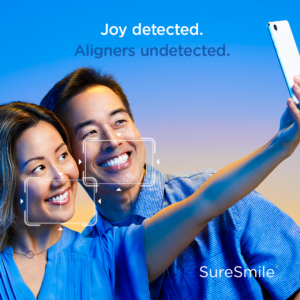
- Daily Wear Time: Both require 20–22 hours per day for best results.
- Visibility: Both are discreet; SureSmile uses a frosted finish while Invisalign features a matte look.
- Treatment Duration: SureSmile averages 6–18 months, while Invisalign may take 12–18 months or longer (up to 5 years).
- Affordability: SureSmile is generally more budget-friendly ($2,000–$6,000 vs. Invisalign’s $3,000–$8,000).
Am I a Candidate for SureSmile Clear Braces?
SureSmile clear aligners can treat many common bite and alignment issues. You may be a candidate if you have:

Crowding
Overlap of teeth caused by insufficient space within the dental arch (a.k.a. arch length discrepancy)
Hard to clean teeth increases the risk of periodontal disease, tooth and/or bone loss.
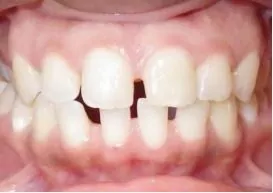
Spacing
Excess space between teeth as a result of missing teeth, undersized teeth, oversized jaws or a combination of these conditions (a.k.a. arch length excess)
Food trapped in spaces and not easily removed with brushing increases risk for gum soreness and periodontal disease.
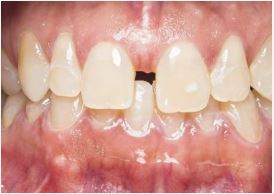
Diastema
Space between upper central incisors that may occur for a variety of reasons including tongue pressure against teeth rather than the roof of the mouth.
Same potential problems as spacing. Any spacing, including diastemas, may also be a symptom of gum disease because of the inflammation.

Crossbite
A tooth or gorups of teeth in the upper arch that site inside of the lower arch. Typically, teeth in the upper arch site outside of the teeth in the lower jaw.
When teeth collide in an unprotected relationship, this increases the likelihood of occlusal trauma that can lead to premature wear, periodontal disease, bone and tooth loss.
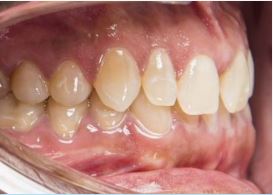
Deep Bite
Upper anterior teeth vertically overlap the lower anterior teeth an excessive amount.
Deep bites may put joint and facial muscles in an unnatural position causing jaw soreness and stressed joints. Grinding and clenching can cause gum recession that can lead to periodontal disease. Over erupted lower teeth have increased risk for wear and chipping.
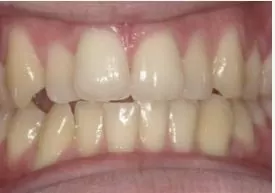
Edge-to-Edge Bite
Upper anterior teeth make incisal contact with lower incisors and there is no overjet or overbite.
Tooth positions increase the risk of abnormal wear of anterior teeth. When the maxillary anterior teeth collide on the mandibular in an unprotected relationship, this increases the likelihood of occlusal trauma that can lead to periodontal disease, bone and tooth loss.
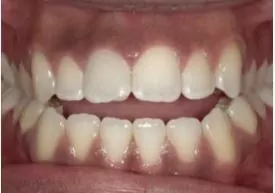
Open Bite
Upper and lower teeth don’t touch when the mouth is fully closed, showing an opening between the upper and lower teeth. Can occur in the anterior or in the posterior of the mouth, but anterior open bites are more common.
Untreated anterior open bite patients often experience pain/discomfort with chewing, biting and swallowing. Excessive pressure on posterior teeth increases risk of premature wear, gum recessions, loose teeth and bone loss.
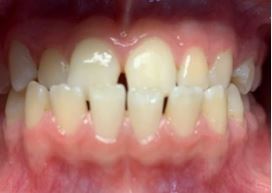
Underbite
The lower anterior teeth or jaw sit ahead of the upper anterior teeth or jaw. Also known as a Class III malocclusion.
When posterior teeth do not fit as they should (Class II/III malocclusions), the imbalance in the distribution of forces may increase the likelihood of bruxism, TMD, premature wear, gum recession, loose teeth and bone loss.
Frequently Asked Questions About SureSmile Clear Aligners
- No goop or gagging
- Instant digital treatment previews
- Better-fitting aligners and outcomes
Straighten Your Teeth with SureSmile Aligners in Yuma and Fortuna Foothills!

We’re proud to offer SureSmile aligners to patients in Yuma and Fortuna Foothills who are ready to improve their smile discreetly and comfortably. Whether you’re correcting crowding, spacing, or bite issues, SureSmile offers a modern path to straighter teeth and lasting confidence.
Ready to learn more? Contact The Yuma Dentist today or click below to request an appointment and get started with SureSmile!
